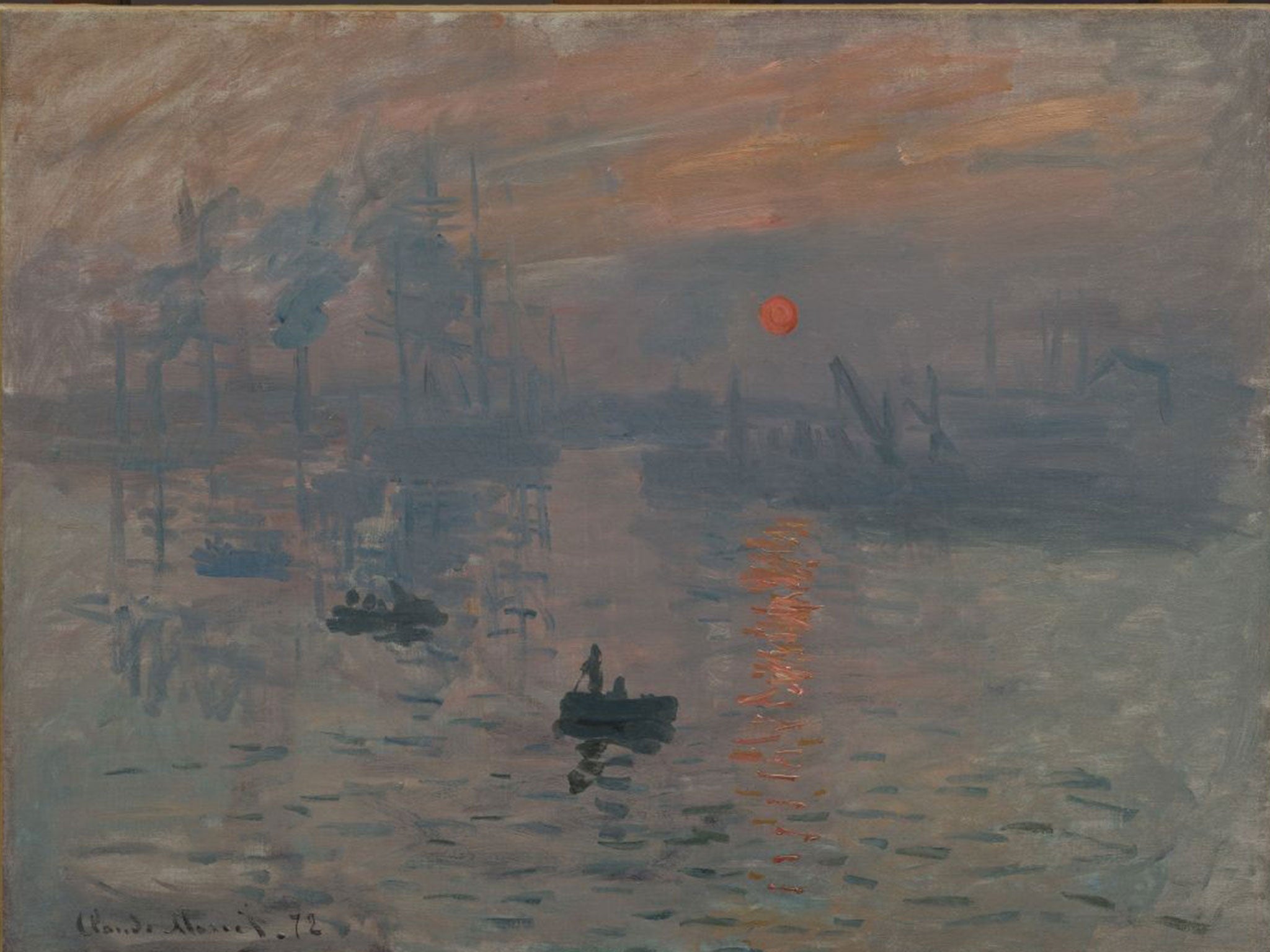Texas forensic astronomer finally pinpoints the exact birth of impressionism
Physics professor finally finds the exact date and time Claude Monet’s Impression, Soleil Levant was painted

It is a question that has confounded art experts for decades, but an astrophysics professor now believes he has pinpointed the exact birth of Impressionism.
Claude Monet’s Impression, Soleil Levant (Impression, Sunrise) gave birth to the art movement, but arguments have raged over when the work was painted and even whether the sun in the painting is rising or setting.
Yet, a team of celestial sleuths from the US, headed by Donald Olson, a professor of physics at Texas State University, believe they can lay the arguments to rest with the answer: 7.35am on 13 November, 1872.
The painting is the focus of an exhibition at the Musée Marmottan Monet in Paris, which opens next month.
Marianne Mathieu, deputy director and head of collections at the museum, said: “We wanted to pay tribute to this very important painting. Much of the history and details about this iconic work were unknown. With these techniques we could uncover new information.” She added: “I wanted to work with Don. He had done it before and on this did wonderful work.”
The US researchers used geographical analysis of Le Havre harbour, which the painting depicts, astronomical calculations of the rising sun, tide levels and meteorological observations of the sea and the sky.
Added to that the team compiled the scant documentary evidence from the artist and visited the location, to more accurately pinpoint the potential date.
Professor Olson, who is known as a forensic astronomer, will present his findings in an essay published in the catalogue for the exhibition. His team has dated paintings in such manner for the past 25 years including work by Vincent van Gogh and Edvard Munch and photographs by Ansel Adams.
The debate arose from a catalogue that dated the picture to 1873, despite Monet signing the work ’72.
“There are no documents to confirm the exact date, and we wanted to explore if there were other ways to date it precisely,” Ms Mathieu said. Another essay in the catalogue refutes the long held view that it was painted in 1873, narrowing down the date further.
For Impression, Soleil Levant Professor Olson located the third-floor room at the Hotel d’Amirauté au Havre from which Monet painted the scene. The museum had also located the exact wharf that Monet painted, which had been the subject of debate.
Professor Olson immediately ruled out the subject being a sunset – which came from a misattributed title in a sale catalogue in 1878 – because of the position of the sun to the east and narrowed down the dates because the sun only rose in the exact position several times a year. The researchers then used contemporary books that specified the time of the sun rise and the tides and fed them into his computer algorithms.
As The Arts Newspaper first reported, the researchers narrowed it to from 19 dates to six using the information, and Professor Olson then considered the smoke in the left of the painting. Using weather reports he narrowed it to two, one of which was ruled out because it was in 1873.
Ms Mathieu said: “This painting is important because it tells us about history of art, of a movement, a history of taste and national history,” adding it was “great that we have learnt new information from studying the work itself.”
The title of the painting prompted art critic Louis Joseph Leroy to mockingly dub the artists of the style “peintres impressionists” which coined the term for a new artistic movement. The first Impressionist exhibition, where the painting was exhibited, was held in Paris in 1874.
Monet recalled in an 1898 interview about the exhibition that featured the work some 24 years earlier: “They asked me the title for the catalogue; it could not really pass for a view of Le Havre, so I replied: ‘Put Impression’. From that came “impressionism” and the jokes have proliferated.”
Join our commenting forum
Join thought-provoking conversations, follow other Independent readers and see their replies
Comments